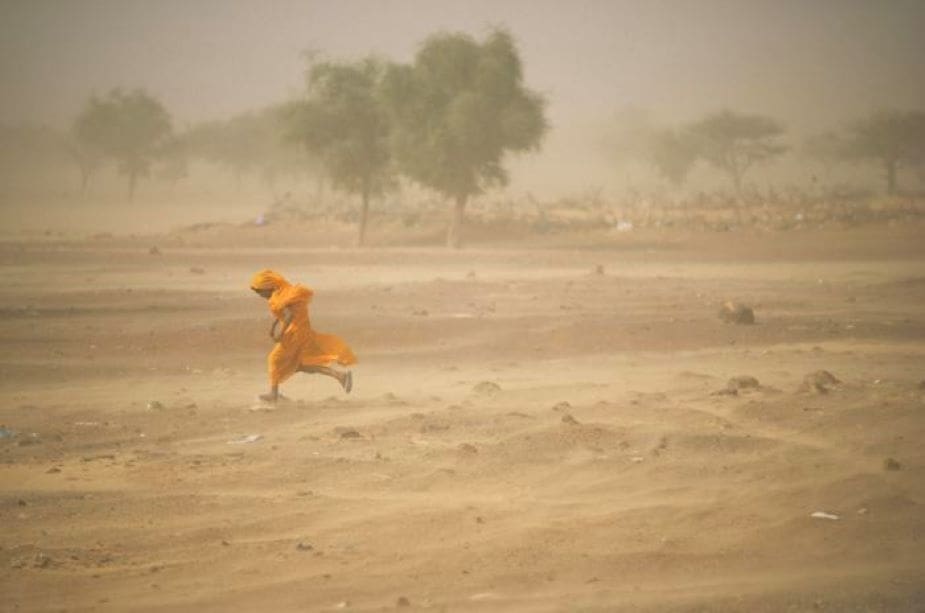Penn State researchers have revealed that microplastics may be influencing the way clouds form, with potential implications for weather patterns, climate models, and even aviation safety.

The study, published in Environmental Science and Technology: Air, suggests that these tiny plastic particles, now found in even the most isolated parts of the planet, are affecting cloud formation by acting as ice-nucleating agents – particles that facilitate ice crystal formation in clouds.
Microplastics, defined as plastic fragments smaller than five millimeters, have been discovered in environments as extreme as the Mariana Trench, the heights of Mount Everest, and now, clouds above China and Japan.
The new research suggests that microplastics suspended in the atmosphere could be changing precipitation dynamics by creating conditions for ice formation at warmer temperatures than typically expected.
“Throughout the past two decades of research into microplastics, scientists have been finding that they’re everywhere, so this is another piece of that puzzle,” said Miriam Freedman, a chemistry professor at Penn State and the study’s senior author. “It’s now clear that we need to have a better understanding of how they’re interacting with our climate system, because we’ve been able to show that the process of cloud formation can be triggered by microplastics.”
In their experiments, researchers explored the freezing behavior of water droplets containing various types of microplastics, including low-density polyethylene (LDPE), polypropylene (PP), polyvinyl chloride (PVC), and polyethylene terephthalate (PET).
By suspending microplastic particles in water droplets and gradually cooling them, the scientists observed that the droplets froze 5–10 degrees Celsius warmer than those without microplastics. Normally, atmospheric water droplets freeze only at temperatures as low as -38 degrees Celsius. However, as lead author and graduate student Heidi Busse noted: “In the case of our microplastics, 50% of the droplets were frozen by minus 22 degrees Celsius for most of the plastics studied.”
These findings raise concerns about the broader impacts of microplastics on climate.
Mixed-phase clouds, which contain both liquid and ice, are prevalent across the atmosphere and influence global weather systems. For example, cumulus and nimbus clouds, associated with storms and heavy rain, depend on specific particle conditions to regulate rainfall and cloud lifespan.
Freedman explained that, under typical conditions, water droplets are distributed across fewer particles, leading to larger droplets that eventually fall as rain. But in polluted atmospheres loaded with microplastic aerosols, smaller droplets form, delaying rainfall and leading to increased cloud water content. This delay can result in heavier downpours when the rain finally falls.
Clouds typically cool the Earth by reflecting solar radiation, but their temperature-regulating properties can shift under the right conditions, even contributing to warming by trapping heat radiated from the planet’s surface. Since the effect of clouds depends on the ratio of ice to liquid water within them, microplastics’ influence on cloud ice formation could disrupt this delicate balance.
“We know that the fact that microplastics can nucleate ice has far-reaching effects, we’re just not quite sure yet what those are” said Busse. “We can think about this on many different levels, not just in terms of more powerful storms but also through changes in light scattering, which could have a much larger impact on our climate.”
In addition to studying pristine microplastics, the researchers examined the effect of environmental aging – chemical processes that change a particle’s properties over time – on ice formation.
After exposing the microplastics to light, ozone, and acids to simulate atmospheric aging, they found that some plastics lost their ice-forming ability, while others, like PVC, increased in ice-nucleating potential due to surface changes. Aging, thus, appeared to make certain microplastics more active participants in cloud formation, while reducing the ice-forming capacity of others.
The researchers intend to further explore how commonly added substances in plastics, such as plasticizers, may impact atmospheric ice nucleation. “We know the full lifecycle of these plastic items we use every day could be changing the physical and optical properties of the Earth’s clouds and, therefore, changing the climate in some way, but we still have a lot to learn about exactly what they are doing,” Busse said.
This research, supported by the U.S. National Science Foundation and conducted at Penn State’s Materials Characterization Lab, brings attention to the underappreciated influence of microplastics on the environment, further highlighting their pervasive impact on natural systems, from oceans and soils to weather patterns and climate dynamics.
Journal Reference:
Heidi L. Busse, Devaka Dharmapriya Ariyasena, Jessica Orris, Miriam Arak Freedman, ‘Pristine and Aged Microplastics Can Nucleate Ice through Immersion Freezing’, ACS ES&T Air (2024). DOI: 10.1021/acsestair.4c00146
Article Source:
Press Release/Material by Penn State
Featured image credit: nuraghies | Freepik




